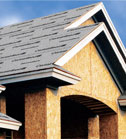Eight years ago there were no iPhones, and YouTube had just been introduced. Since the iPhone's release in 2007, more than 200 million have been purchased. And a year after its debut, YouTube was sold for $1.65 billion and now operates as a subsidiary of Google.
Emerging technologies such as these literally have changed the way we live. Millions of people use smart phones to receive news and information, play games, and connect with friends and family. What once seemed like something you only would see on "The Jetsons" has become the norm: The future definitely is now.
Late adopters left behind
From a business perspective, new technologies are developing at lightning speed. Historically, the construction industry and roofing contractors have been late adopters of new technology. It's not always easy to incorporate new technologies into a roofing business; however, not doing so is going to leave you far behind your competitors.
Many roofing companies arm their sales teams with smart phones and laptops and install portable printers inside their trucks. Although these are good places to start, the mobile office concept is the minimum your company should be doing. It's important to remember just having the technology in place is not enough; it has to be incorporated into your everyday business processes to have any effect.
If you've given everyone on your team a smart phone, be sure to have the infrastructure in place so your team can communicate using the device's e-mail feature. Job production will be much smoother when the estimator, job scheduler and installation crew all receive the same information about a particular job.
Automating manual tasks
There's much more to technology than computers and smart phones, but the good news is this: Technology is becoming more affordable and easier than ever to use. There also are many business-specific technology solutions that have been introduced recently and are designed to help you better manage your business and improve efficiencies, ultimately leading to increased profitability.
Asset management technology is a great example of something you've probably used for years. You know how many trucks you have and to which job sites they are assigned. With the advent and advancement of GPS technology, you now can know exactly where those vehicles are at any given moment, where they traveled during the day and even how fast they were going. Using GPS systems for navigation to customer locations reduces the chances of getting lost and wasting time trying to find job sites.
Similarly, aerial measurement technology has quickly grown to be a mainstay in the way many roofing contractors prepare estimates and proposals for jobs. Gathering roof measurements used to be a time-consuming process prone to mistakes such as mathematical errors or simple human error, but it now has become quick, easy and reliable using aerial measurement technology.
Katchmark Construction Inc., a Chantilly, Va.-based roofing company, has incorporated technology into every aspect of its business.
"We use technology in everything we do," says Stephen Katchmark, president of Katchmark Construction. "It's growing in the roofing business, and contractors who don't jump on board are going to be left behind."
Katchmark says integrating technology into his business has allowed for the development of a systems-driven approach to sales and operations.
"When a lead comes in, the first thing we do is order an aerial measurement report for the salesman," Katchmark explains. "He takes that report and his laptop to the sales call, meets with the homeowners and estimates the job on-site. The contract is printed right there, and the sale is closed in one trip."
This systems-driven approach is paying off well for Katchmark's bottom line.
"We've seen our closing rate increase about 20 percent," Katchmark says. "Technology speeds up the sales and estimating process and allows us to spend more time with customers."
Automating the roof measuring process has additional benefits for contractors.
"Aerial measurement technology's ability to accurately measure from above has revolutionized our business process," says Ken Kelly, president of Kelly Roofing, Naples, Fla. "We no longer have to worry about hiring roofing workers as salesmen or training them for a year. The technology has allowed roofing company owners to hire sales professionals without sacrificing ability, accuracy or knowledge."
Katchmark agrees. When he started his business in 1988, he was its sole estimator and confident in his abilities to measure, estimate and sell. When it came time to grow the company, worries set in about hiring salesmen.
"Would they understand how to measure a roof and know what a rake is at 12:12 like I would?" Katchmark asked. "I had guys who would forget an entire section of a roof."
He says integrating aerial measurement technology into his business has allowed him to develop a true systems-based approach to sales and hire the right people to further grow his business.
Evolution of estimating
Traditionally an early adopter, Kelly realized the power of technology in estimating when Hurricane Andrew struck Florida in 1992. This led to the company's first mobile office. Kelly remembers the challenges his company faced responding to the unprecedented amount of work and how using technology enabled them to do more.
"I was a senior in high school and remember taking off school to join my father in helping to rebuild," Kelly recalls. "To increase his efficiency, I put a power inverter, monitor, dot matrix printer and full-tower central processing unit in the back seat of his truck. My father called out measurements from the roof, and I entered them into a spreadsheet. We'd print off the estimates and hand them to the homeowner and insurance adjuster."
Implementing this system allowed them to estimate more than 50 homes per day—unheard of in 1992.
The advent of personal computers and spreadsheet programs allowed for faster preparation of estimates and eliminated some common manual errors, such as incorrect calculations. Although offering an electronic means to develop an estimate, electronic spreadsheets have limitations. Accuracy can be an issue as errors may arise through the use of incorrect formulas and mistakes made while entering numbers and data. Despite limitations, the use of computerized spreadsheet programs grew in popularity and became the norm for estimating during the 1990s primarily because they relieved estimators of the burden of performing manual calculations. Contractors also quickly recognized the value of presenting job estimates or proposals with a professional appearance, and many small roofing companies still rely on spreadsheets.
But estimating technology has progressed. Commercial estimating software programs now feature hard-coded formulas to reduce user errors experienced with spreadsheet programs. These platforms often are robust and provide a good solution for larger contracting firms looking for job management, estimating and customer management solutions. Often, such software is cost-prohibitive for smaller roofing companies though the introduction of Web-based solutions has put this tool within reach of virtually any size roofing company.
Not every solution will fit every business, so it's important to understand your company's needs, how the technology fits into your existing processes and what new efficiencies can be realized by implementing an estimating platform.
"We saw right away how much this tool would speed up the process for us," Katchmark says. "We were able to measure and estimate a 92-square roof within five minutes. Without these technologies, we would have spent hours crawling around the roof gathering all the information. With this kind of speed, a salesman will be able to run more leads and spend more time in front of customers."
Distributors are a resource
Beyond the fact that technology helps contractors prepare estimates and professional presentations, it also plays an important role in a contractor's ability to efficiently communicate with distributors and be more precise in material ordering.
Greg Bloom, chief sales and marketing officer of Allied Building Products, East Rutherford, N.J., has seen technology shape the way his customers conduct business and the way his company communicates and interacts with them.
"Technology has allowed us to communicate more with our customers," Bloom says. "It used to be you only could call customers from your office. Mobile technology has allowed us to stay in touch and be responsive to our customers' needs no matter where we are."
Bloom says his company encourages its customers to use technologies that can help with exact material ordering and increased efficiencies. They supply building materials for jobs based on what a contractor orders. If a job's measurements and estimates are off, the materials delivered are going to be off, too.
"If a job is measured incorrectly, the material order will be incorrect," Bloom says. "If the order is short, it creates problems for the contractor and problems for the distributor. If the order is over, the excess likely will be thrown away, stored in the contractor's yard, or returned to the distributor who may or may not charge a restocking fee. Whatever the error, it's costly to the contractor."
Distributors can be a great resource for contractors who may be hesitant to change the way they've always done something and incorporate new technology.
"It's important for contractors to understand there are advanced technologies to help them increase their efficiencies and help them grow," Bloom says. "These technologies allow contractors to become more effective leaders, and they help in the development of strategic and critical thinking."
The competitive edge
Continuing to differentiate your business through the use of technology is what's going to give your company a competitive edge in this tough economy. Building owners and homeowners respond positively to contractors who use and adapt to technology. With the growing use of the Internet, people have grown accustomed to receiving instant information.
Katchmark gets feedback every day from customers who are impressed with the technology his company uses on job sites.
"When we show customers we have aerial images and measurements of their property, they are amazed by the report," he says.
He has seen it work in his favor many times when he is getting pushback from a homeowner because he or she received a lower bid from another contractor.
"I explain the other contractor could have made an error in measuring or estimating the materials needed because he or she did everything by hand. We have no way of missing the numbers because we are relying on the technology to make sure we are accurate," Katchmark says.
What's the right fit?
As you think about your company's current processes and evaluate whether you are ready to take the leap into technology, consider the following points:
- Late adopters will be left behind. Many contractors are using technology as a daily part of their businesses and consumers now expect it.
- Look beyond the technology and examine how it fits into your business process to make a real difference and increase efficiency and profitability.
- Don't be intimidated. Reach out to trusted industry partners such as distributors and manufacturers. Many offer technology tools and training to help you improve the processes you already have in place.
As mentioned earlier, not every technology solution is going to be right for every business. It comes down to the importance of really understanding your company and its needs. When you understand your needs and pain points, you can begin looking at how available and emerging technologies can help.
Karen L. Edwards is marketing director for EagleView® Technologies Inc., Bothell, Wash.



